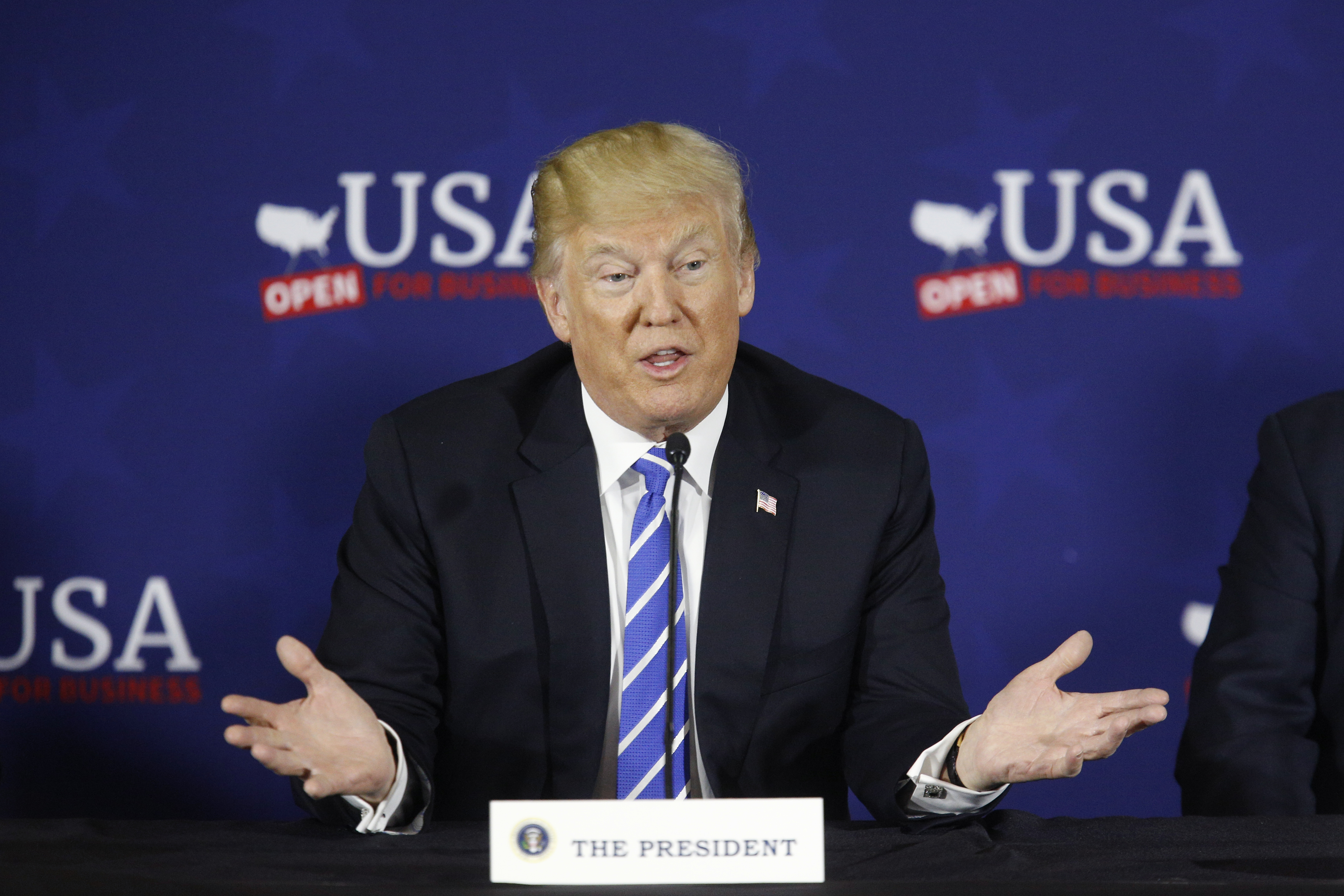Abuse of the National Emergency and Balance of Power
It is time for Congress to consider its role in our tripartite government and recognize what it has given away.
January 25, 2019 at 10:50 AM
5 minute read
 U.S. President Donald Trump has threatened to declare a national emergency over U.S.-Mexico border security.
U.S. President Donald Trump has threatened to declare a national emergency over U.S.-Mexico border security.
A national emergency is defined by the Merriam-Webster Dictionary as “a state of emergency resulting from a danger or threat of danger to a nation from foreign or domestic sources and usually declared to be in existence by governmental authority.”
It should go without saying that a national emergency should represent an actual emergency, something that is serious, unexpected, and perhaps dangerous, requiring immediate action to protect the country. Previous national emergencies have included declarations to block certain transactions with Iran following the taking of American hostages, to prevent the spread of weapons of mass destruction in the early 1990s, and following the 9/11 terrorist attacks.
At least post-Harry Truman, it has been readily understood and agreed that national emergencies should not be declared to circumvent political disputes that a president is losing. But now, we are faced with a president who does not appear to either understand or care about the checks and balances that are fundamental to American democracy and threatens a national emergency to end a dispute that he has not won politically.
It defies logic to consider how a situation that has remained largely unchanged for the entirety of the Trump presidency without an emergency being declared—namely that a dwindling number of people illegally enter the United States through the U.S.-Mexico border each year, many of whom are detained for an extended period of time—only now constitutes an emergency warranting such a declaration.
Like the previous weaponization of the filibuster, are national emergencies now to be considered fair use in the presidential political toolbox? We hope not. But these events convince us it is time for Congress to reconsider the powers it has delegated to the executive branch, especially powers available under a national emergency.
In addition to any implied powers the president may have under the Constitution in times of national emergency, there are more than 130 separate statutes that grant the president extraordinary powers in case of a national emergency. Under these statutes, which remain dormant until invoked, a president may, inter alia, impose martial law, take control of electronic communications, freeze Americans' bank accounts, deploy federal troops unilaterally and within U.S. borders, militarize public health service, dispose of infectious medical waste in the ocean, or take control of an airport.
The president's emergency powers may be accessed under the National Emergencies Act of 1976, which merely requires the president to identify a statute under which he is seeking emergency powers, declare a national emergency, which is not defined, and renew the state of emergency annually. Emergency powers are limited under the statute invoked, but the criteria for declaring a national emergency are not. Additionally, although the act provides that Congress can revoke the emergency by voting to do so, that resolution must be presented to the president, who is free to veto it. As such, a national emergency is impossible to remove without the agreement of the president.
There are 28 national emergencies currently in effect, the longest of which was declared by President Jimmy Carter and blocks property of the Iranian government from entering the country. The fact that there is little check on the use of emergency powers is worrying, especially if they may become political tools.
Even without an emergency, however, Congress appears to have almost completely ceded the power to use military force anywhere in the world. In 2001, just 17 days after 9/11, Congress passed the Authorization for Use of Military Force (2001 AUMF), which provides “the President is authorized to use all necessary and appropriate force against those nations, organizations, or persons he determines planned, authorized, committed, or aided the terrorist attacks that occurred on September 11, 2001, or harbored such organizations or persons, in order to prevent any future acts of international terrorism against the United States by such nations, organizations or persons.” When the 2001 AUMF was passed, it was determined that the 9/11 attacks had been orchestrated by Osama bin Laden and al-Qaida, operating out of Afghanistan. The U.S. began military operations against al-Qaida in Afghanistan on Oct. 7, 2001, which ultimately led to the death of bin Laden on May 2, 2011, in Pakistan.
But from 2001 to 2015, the 2001 AUMF was also used 37 times under both the Bush and Obama presidencies, some for operations whose connection to 9/11 appears dubious at best. The 2001 AUMF was used to justify military action in Iraq, the Philippines, Georgia, Yemen, Djibouti, Somalia, Turkey and Libya and new military operations against ISIS in Iran and Syria. This expansive view of the 2001 AUMF continued in the Trump administration, which saw new deployments in Niger, Chad, Nigeria and Lebanon. The Trump administration also determined it needed no new congressional authority to keep troops in Syria and Iraq, even launching cruise missiles into Syria. This end run around congressional authority has continued for more than 17 years.
It is time for Congress to consider its role in our tripartite government and recognize what it has given away. Especially in the case of powers expressly delegated to Congress in Article II, including appropriations and war powers, Congress should be cautious about ceding those powers elsewhere. Unwelcome as this current situation is, it provides Congress with a reason to institute periodic review of presidential actions taken in its lane. We hope that it does so.
This content has been archived. It is available through our partners, LexisNexis® and Bloomberg Law.
To view this content, please continue to their sites.
Not a Lexis Subscriber?
Subscribe Now
Not a Bloomberg Law Subscriber?
Subscribe Now
NOT FOR REPRINT
© 2025 ALM Global, LLC, All Rights Reserved. Request academic re-use from www.copyright.com. All other uses, submit a request to [email protected]. For more information visit Asset & Logo Licensing.
You Might Like
View All
ADVANCE Act Offers Conn. Opportunity to Enhance Carbon-Free Energy and Improve Reliability With Advanced Nuclear Technologies

Trending Stories
- 1US Judge Dismisses Lawsuit Brought Under NYC Gender Violence Law, Ruling Claims Barred Under State Measure
- 24th Circuit Upholds Virginia Law Restricting Online Court Records Access
- 3Lawsuit Against Major Food Brands Could Be Sign of Emerging Litigation Over Processed Foods
- 4Fellows LaBriola LLP is Pleased to Announce that Alisha Goel Has Become Associated with The Firm
- 5Law Firms Turn to 'Golden Handcuffs' to Rein In Partner Movement
Who Got The Work
J. Brugh Lower of Gibbons has entered an appearance for industrial equipment supplier Devco Corporation in a pending trademark infringement lawsuit. The suit, accusing the defendant of selling knock-off Graco products, was filed Dec. 18 in New Jersey District Court by Rivkin Radler on behalf of Graco Inc. and Graco Minnesota. The case, assigned to U.S. District Judge Zahid N. Quraishi, is 3:24-cv-11294, Graco Inc. et al v. Devco Corporation.
Who Got The Work
Rebecca Maller-Stein and Kent A. Yalowitz of Arnold & Porter Kaye Scholer have entered their appearances for Hanaco Venture Capital and its executives, Lior Prosor and David Frankel, in a pending securities lawsuit. The action, filed on Dec. 24 in New York Southern District Court by Zell, Aron & Co. on behalf of Goldeneye Advisors, accuses the defendants of negligently and fraudulently managing the plaintiff's $1 million investment. The case, assigned to U.S. District Judge Vernon S. Broderick, is 1:24-cv-09918, Goldeneye Advisors, LLC v. Hanaco Venture Capital, Ltd. et al.
Who Got The Work
Attorneys from A&O Shearman has stepped in as defense counsel for Toronto-Dominion Bank and other defendants in a pending securities class action. The suit, filed Dec. 11 in New York Southern District Court by Bleichmar Fonti & Auld, accuses the defendants of concealing the bank's 'pervasive' deficiencies in regards to its compliance with the Bank Secrecy Act and the quality of its anti-money laundering controls. The case, assigned to U.S. District Judge Arun Subramanian, is 1:24-cv-09445, Gonzalez v. The Toronto-Dominion Bank et al.
Who Got The Work
Crown Castle International, a Pennsylvania company providing shared communications infrastructure, has turned to Luke D. Wolf of Gordon Rees Scully Mansukhani to fend off a pending breach-of-contract lawsuit. The court action, filed Nov. 25 in Michigan Eastern District Court by Hooper Hathaway PC on behalf of The Town Residences LLC, accuses Crown Castle of failing to transfer approximately $30,000 in utility payments from T-Mobile in breach of a roof-top lease and assignment agreement. The case, assigned to U.S. District Judge Susan K. Declercq, is 2:24-cv-13131, The Town Residences LLC v. T-Mobile US, Inc. et al.
Who Got The Work
Wilfred P. Coronato and Daniel M. Schwartz of McCarter & English have stepped in as defense counsel to Electrolux Home Products Inc. in a pending product liability lawsuit. The court action, filed Nov. 26 in New York Eastern District Court by Poulos Lopiccolo PC and Nagel Rice LLP on behalf of David Stern, alleges that the defendant's refrigerators’ drawers and shelving repeatedly break and fall apart within months after purchase. The case, assigned to U.S. District Judge Joan M. Azrack, is 2:24-cv-08204, Stern v. Electrolux Home Products, Inc.
Featured Firms
Law Offices of Gary Martin Hays & Associates, P.C.
(470) 294-1674
Law Offices of Mark E. Salomone
(857) 444-6468
Smith & Hassler
(713) 739-1250












